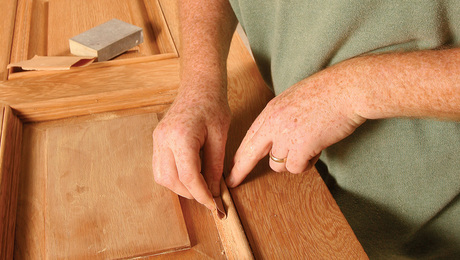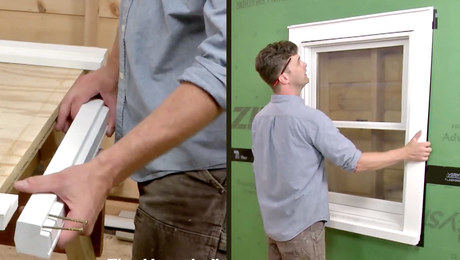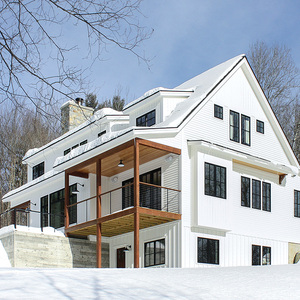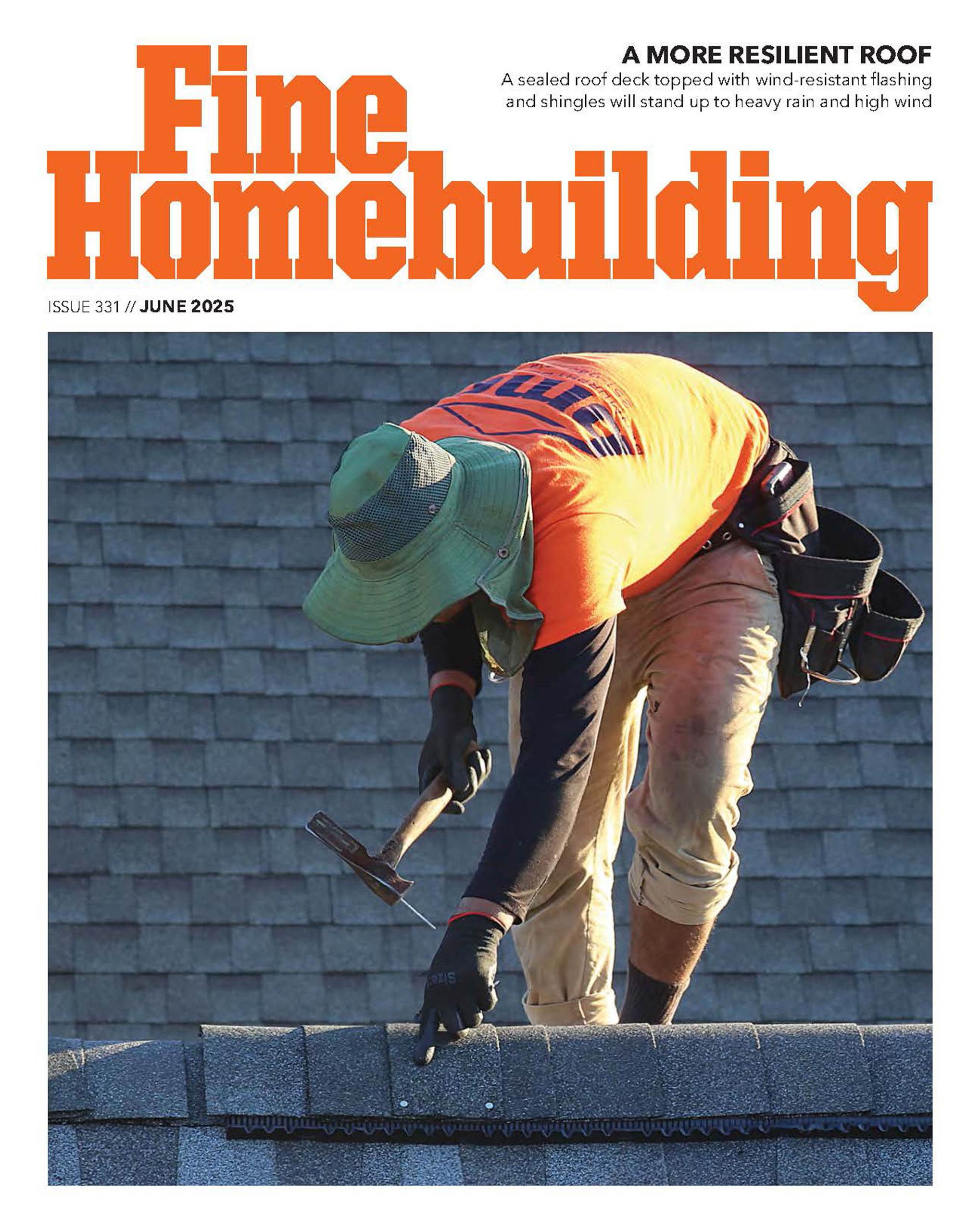How to re-pour concrete in saw-cut slab?
I saw-cut through my 4-inch slab on grade in my basement, removed concrete and dirt, had a plumber install the underground plumbing for toilet/tub (ABS), and passed city inspection for the plumbing. So far so good. I’m now planning to backfill with dirt, then re-pour concrete. I’ve never done it (homeowner not a pro) and I could use some tips and advice.
Here’s what I was planning to do:
(please let me know what’s right and what’s wrong with this plan)
1) hammer-drill holes sideways into the cut surfaces of the concrete to make holes 3-inch deep for dowels (3/8 rebar that I already have sitting around)
2) remove all loose material from the dirt hole
3) clean rocks and concrete out of the fill dirt
4) shovel-in dirt into the hole and pack-down each 4-inch layer, repeat
5) install rebar pieces, every 2 feet square pattern, lash together with wire ties
6) epoxy rebar ends into the holes
7) mix and pour standard concrete from 80lb bags at Home Depot ($4 each, 10 bags) – the hole is an L-shape, about 12 sq ft
8) smooth the surface with hand tools
I was a bit surprised that there’s no rebar or remesh in the slab in the first place. There are control lines. So I’m basically making a reinforced section in an otherwise unreinforced slab.
Any comments and advice welcome!
Thank you everyone.



















Replies
The mat of tied rebar is not necessary. The dowels, however, are because they will not allow the patched area to settle out of plane with the surrounding slab. Basement slabs are otherwise not reinforced, so yours is normal.
I agree the tied rebar is not necessary. However, as concrete will always crack, a wire mesh reinforcing will help to keep the hairline cracks from getting larger. If the mix is wrong or the job done sloppy, the wire mesh reinforcing won't help.
HD sack mix is fine for a floor slab, just dont add so much water it is soup.
Did not see anyone mention shrinkage.
It is a good idea when filling in a cut section of cured floor to screed it off a 1/16th of an inch higher. I do this by putting a couple of shims on the existing floor on either side of the slot to fill and screed off that guide.
No need for rebar, roughing up the sides of the cut will provide enough of a 'key'
as concrete will always crack
That's not true. Generally, it is, but generally concrete users are clueless about concrete. Cracked concrete is due to operator error.SamT
So much of the success of a company is not determined by degrees but temperature. gb93433 83537.46
Concrete always shrinks, and usually cracks. The lower the water to cement ratio, the less shrinkage and higher the strength, thus less cracks. But, it must crack if the tension developed exceeds the tensile strength of the concrete.
I do not think it should be an issue in this case, as this is the repair of a cut in the slab made to install plumbing. So, my mental image is a slot less than two-foot wide, with concrete about four-inches deep. It shouldn't crack except at the "L" angle.
I would recommend that you install a pair of #4 rebar "L" bends extending about 30 inches on each leg of the "L", centered in the slab, two to three inches in from the edges.
I would also recommend the use of dowels, to reduce the potential for differential settlement.
In regard to leaving the surface a little high, as was suggested: Don't. It is lots easier to level things up with some floor leveling gypsum concrete to bring it up 1/16-inch, (if it is low), than it is to get 1/16 lower if it ends up high.
The suggestions to enrich the mix by adding more concrete are valid, but not too much. The 5000psi sack-crete if available is preferred.
Keep the water to a minimum, just enough you can get in the hole and work out the air voids. With less water, the concrete is stronger, and the shrinkage is less as it cures, unless there is lots of cement in the mix, and the heat of hydration pushes the temp up so high you get temperature shrinkage. In this case that won't be a problem.
For the back fill, you don't need to take out concrete rubble or rocks less than about 1-1/2-inches in size. Be sure the plumbing lines are well bedded, and no rock is pushing on it, that will cause it to crack. Do compact it well. You need to be sure the dirt is close to "optimum moisture" as you put it back. The quick test is grab a hand full and squeeze it as hard as you can. If it makes a pretty solid "pill', you're close enough. If it is gooey, you are too wet. If it won't hold shape and make a pill, try adding a little water to see if it gets better. It it doesn't you may be lucky enough to have sandy soil which is easy to compact.
Good luck.
I just read through this whole thread. Good advice, but no one picked up on your backfill.
Backfill your trench with 3/4" crushed rock, not dirt! Hand tamping rock in a trench will give you the compaction you need to support your patch. Hand damping dirt in 4" lifts will not.
edit:replied to the wrong poster. meant for the OP
Dave
Edited 1/16/2007 6:10 am ET by DaveRicheson
I caught it. Just disagree witcha.
In this one particular instance.SamT
So much of the success of a company is not determined by degrees but temperature. gb93433 83537.46
I am not a fan of backfilling and compacting with dirt over plumbing lines. We are required to bed and cover lines in crushed stone. Adding dirt and tamping it on top of the pipe is asking for problems IMO. I just fill the trench with crushed stone, and never need to worry about wheather I knocked the drians out of wack with by thumping on them with a tamper.
Dave
SamT
So much of the success of a company is not determined by degrees but temperature. gb93433 83537.46
Hey guys... while we are on the subject, what exactly does the aggregate do? Is it possible to mix concrete without aggregate and use it expecting good results.
I've done some patches over time and notice that the aggregate sometimes becomes a real pain in the butt as it get's loose and under my straightedge when tryng to work things together.
When you're this good, EVERYONE wants a crack at you!
http://www.petedraganic.com/
Is it possible to mix concrete without aggregate and use it expecting good results.
Pretty pricey though, it is called [straight cement] grout.
grouted in a 'few' 1" high strength rockbolts into Minuteman silos in the the 70s during an upgrade, thick cement and water paste - never watched a test of the samples, but heard it was WELL over 3 ksi.
Aggegate supplies strength to the concrete ,(which isn't concrete unless it has aggregate over 1/4" in the mix, it is called morter with out it).
I think that everyone so far is overkill. How wide is your trench? I expect it is just wider than 3" or 4" abs pipe. Just back fill, tamp and spray down with water as you fill, you will have no problem with settling. You don't need to pin anything either. Fill in with 4" of bagged mix and you will be fine. I have done this several times with no problems.
I am not the OP.
I've also done a few of these. My cut for the pipe trench is from 12 to 16" wide. It makes digging a lot easier when I can get a shovel, not a spade, into the trench.
As I mentioned earlier, we have to bed and cover the pipe in crushed stone to pass inspection. That means I we are going to haul rock in and dirt out anyway. Trying to compact dirt over top of 3/4" crushed limestone is wasted time and effort. We are not very concerned about settling of the small patch over the trench. Filling the trench to within 4" of the top is simply more efficient. The risk of knocking the pipe off grade is minimized and the compaction, even without tamping, is better than can be had using loose fill dirt.
Dave
I was going to add that comment, so, another vote for stone.
That all sounds good, except you don't need the epoxy (that bar isn't going anywhere) and the sack-crete at HD is really lean. If you add about 1/4 to 1/3 bag of portland cement to your 10 bags of mix you will get a pretty good result.
The mixture is a judgement call. If it feels harsh like it won't finish well (sounds like cheap wine <G>) add some cement.
Just don't put too much in. After a certain point more is not better.
Mix it up as dry as you can stand to work it (like wet oatmeal) and you should be all set. Just enough water for workability. Too much messes it up.
I agree with everything but the sack crete, I dont like sack crete
Brownbagg,
What do you recommend for projects using site mixed concrete?My local quarry sells a sand aggregate mix. Are there any pitfalls in using this?Is sack concrete acceptable if additional cement is added or are does it possess additional inadequacies?If getting ready mixed concrete isn't a realistic option and top quality concrete is desired (mostly landscaping/hardscaping purposes) what is your recommendation?Thanks
Karl
This has come up at BT before""Is sack concrete acceptable if additional cement is added or are does it possess additional inadequacies?"" Reputable sack mix companies provide a mix that IF mixed according to their instructions will meet the standards that are listed on the bag for Compressive strength. They are tested regularly to ensure this happens.
Define "Top Quality"
Freeze resistance, workability, impact resistance, acid, base, Salts, heat, stiffness, flexibility, compressive strength, tensile strength, polish finish, exposed aggregate, stain finish, working time, hot/cold weather pour? Which is it?
Might as well ask what's the best quality metal.
It all depends on the application.
Generally speaking, a 3500 psi mix is adequate for most purposes.
Generally speaking, after you have determined the maximum sized aggregate you can use, say for example 2". For each yard of mix, you should use 1 yard of 2", then subtract the absolute volume (.75 cuyd?)of that stone from 1 cuyd and add the remainder volume (.25 cuyd?) of whatever sized stone (for example 1") that will fit in the spaces left in the cuyd of 2". Now subtract the absolute volume of the 1" stone from .25cuyd and add that volume of the stone that will fit in the voids left in the 1"and 2" mix. Figure the remaining voids size and volume and fill with smaller aggregate. Continue down to fine powdered sand. At no time does the resulting mixed mass get bigger than 1 cubic yard.
When you pack the aggregate really well and pick off the few large pieces on top, it should look solid with no voids.
Generally speaking, concrete has water added to make it possible to work. This reduces its'strength and increases its' propensity to crack, it also decreases its' resistance to freeze and salt damage.
For most work a landscaper will normally run into, an aggregate mix of ~1" down to 0" in a 6 bag mix at 0" slump with enough water reducing admix to make it workable will be a "top quality" recipe.
Sakcrete comes in anything from a 2000psi "fencepost" mix to 6000psi. Adding a shovel of cement to a 3000psi - 4000psi sack will make it more workable, and more freeze and crack resistant.
Adding extra water to concrete will make it more workable and less freeze and crack resistant.
Letting concrete dry before it cures garuntees cracks.
IMnsHO, 99.98% of concrete problems can be attributed to either too much water in the mix or not enough water in the cure. Typically, both in sequence.SamT
So much of the success of a company is not determined by degrees but temperature. gb93433 83537.46
""IMnsHO, 99.98% of concrete problems can be attributed to either too much water in the mix or not enough water in the cure. Typically, both in sequence.""
Say it again Sam...
You're doing fine except for the sac crete. They sell 60# bags too, lot easier on the body than 80s.
Old Joe H
Don't use any kind of premixed concrete right from the bag. They are all about 2 bag mix and will turn to dust before too long.
Buy enough cement to make a fairly rich mix.
Brickie, Catskinner, brownbagg, JoeH, BoJangles, SamT and anybody else I forgot - thank you all for the fast response and the sound advice
if you dont keep it wet for at least seven days, I really like 14, the slab will crack.
keep it wet, put plastic on top, and the framer can do what ever he wants.
First take a sledge and break off all the sawcut edges. You want some parts to slope down and in and some to slope down and out. But you definately do NOT want smooth and straight.
At least 5 minutes, but not more than 20 minutes, before you pour wet the edges and subsoil.
Use a 6 bag mix for ease of finish and least shrinkage.
Keep the repair damp for 14 days.
Keep the repair damp for 14 days.
Keep the repair damp for 14 days.
SamT
So much of the success of a company is not determined by degrees but temperature. gb93433 83537.46
SamT - really appreciate the fast response and the great advice. Do you think it's enough to rough-up those edges, or do you recommend dowels too?
As for keeping it damp for 14 days, well, I am having my framers start on Monday... one of the floor plates (treated) goes right over one side of the re-pour...
I assume the 2 weeks of dampness prevents cracking? shrinkage? both?
thanks!
Easy way to dampen the broken-out edges without overly soaking the hole is with one of those pistol grip squeeze sprayers; available at Big Box or hardware store. BruceT
Do you think it's enough to rough-up those edges, or do you recommend dowels too?
Yes. 12" #4 rods, 2' OC, and a perimeter ribbon of #4 rebar. Drill the existing for the dowels about 8" deep before you chip the edge. You have to chip the edge because new crete won't bond to a sawcut surface well enough. Also when it cracks between the old and the new, the crack will be very small and irregular. The back and forth angles help key the repair in place.
Put a water barrior over the backfill and plastic on top like BB said. It's very important to have enough moisture around the new crete, can you saturate the old perimeter a couple of feet out the day before you pour? Can you saturate the backfill soon enough before to just let it dry out to firmness?
FWIW, and it's only my opinion, if the edges are rough, and less than a week old, and the existing crete has a high humidity content, I think that wetting the edges with water is better than using a bonding agent. OTOH, a bonding agent is a requirement if pouring to sawcut surfaces, but that still is not as good as doing it the right way. That means MY way, of course (|;>)
SamT
So much of the success of a company is not determined by degrees but temperature. gb93433 83537.46
All this having been said, everyone who criticised sack-crete is correct. It's crap.
However, you are only placing about 1/3 of a cubic yard from what I see. I don't think it's time to call the local redi-mix plant. <G>
Sure you could go find enough material to do the old 1-2-3, but this is not structural. It's a floor patch.
If, as I suggested, you add a little Portland to the sack-crete it will work. You could also add a little Anti-Hydro to the water and it will work even better.
Sam's note about wetting the edge is good. A little bonding agent would be even better.
Everyone is commenting on the bagged mixes - there is a 5Kpsi mix that will come in around a 7 bag mix - use that - no fuss.
One thing I'd do different is to apply a rewettable glue to the edges of the existing slab (this eliminates the need to dampen them and promotes adhesion between the old pour and the new one). Don't worry about roughing the edges up, but DO use the dowels. Adding a little cement to the ready mixes is good and I usually add a little mortar sand also for a smoother finishing and stronger mix. I usually just add the sand into the top layer of the pour.